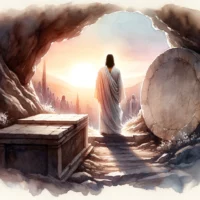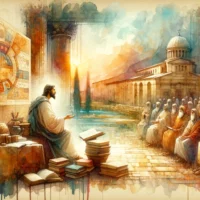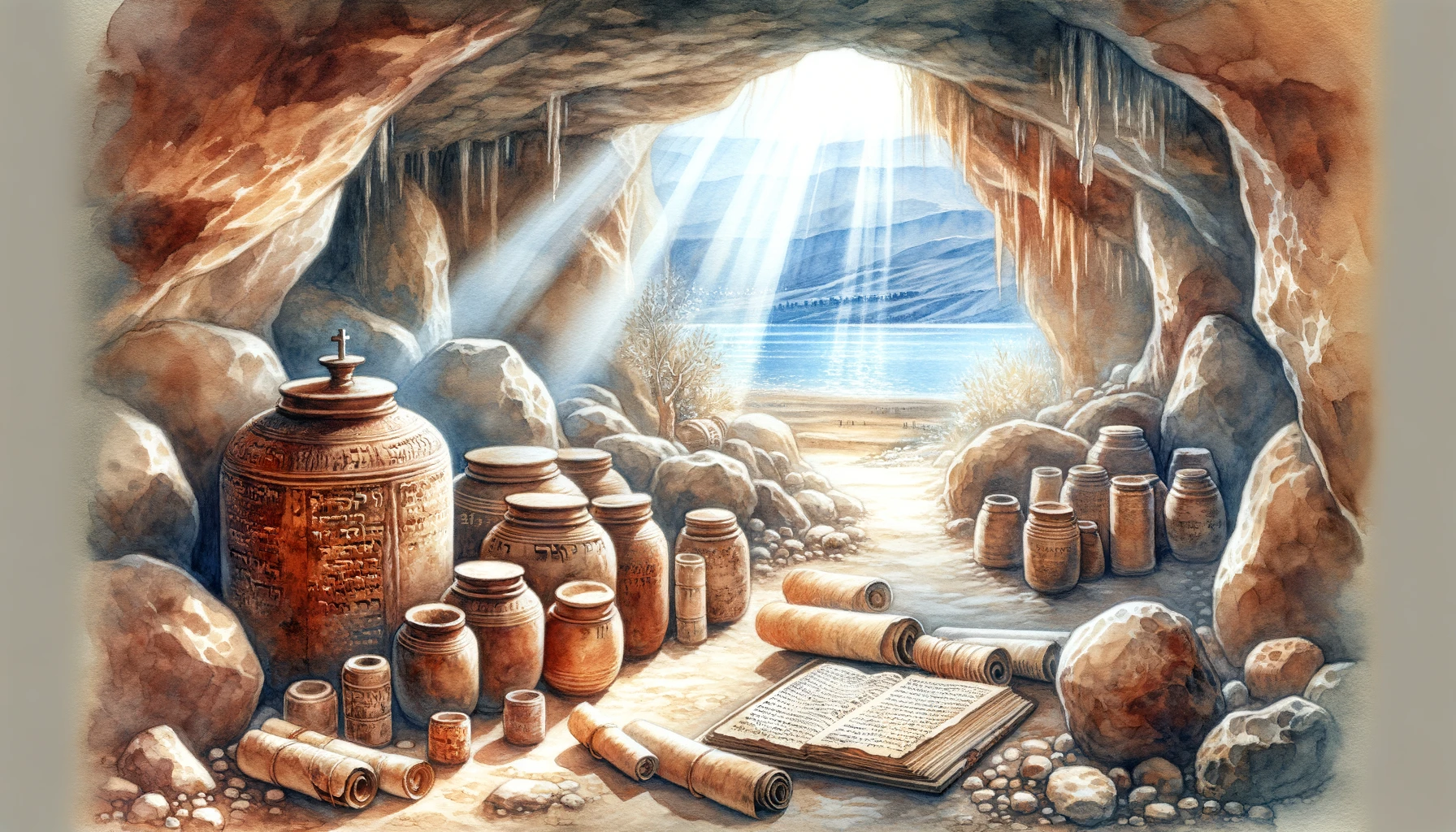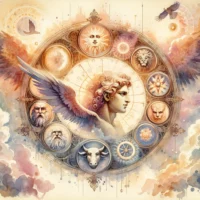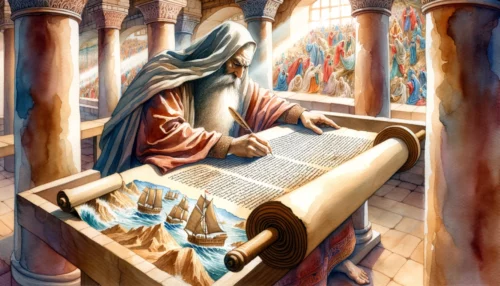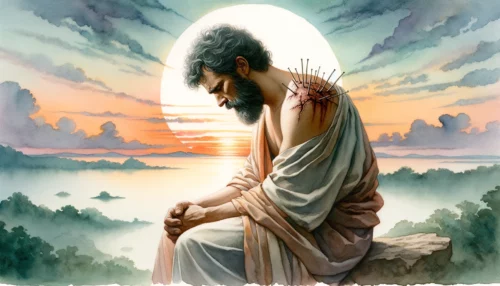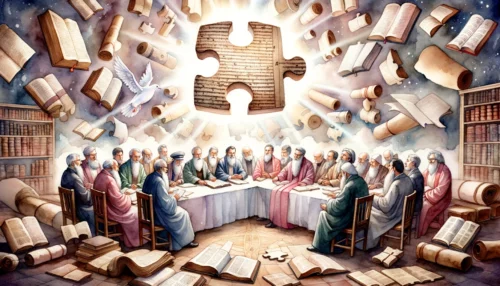The discovery of the Dead Sea Scrolls in the mid-20th century represents one of the most significant archaeological finds for both Judaism and Christianity. These ancient manuscripts, hidden in caves near the Dead Sea, include the oldest known versions of the Hebrew Bible, apocryphal works, and sectarian documents. Their content spans from the third century BCE to the first century CE, offering a unique snapshot of religious thought and practices during this pivotal period. For Christians, these texts provide invaluable insights into the Jewish context of Jesus’ time, the diversity of Jewish thought preceding early Christianity, and the development of the biblical canon. But beyond their historical value, how do these scrolls challenge and enrich our understanding of Scripture and our faith’s foundations? And in what ways do they bridge the gap between the Jewish roots of Christianity and the teachings of Jesus Christ?
The Discovery and Significance of the Dead Sea Scrolls
The Dead Sea Scrolls, uncovered by a shepherd in the Qumran caves near the Dead Sea between 1947 and 1956, represent one of the most extraordinary archaeological finds of the 20th century. These ancient texts, encompassing biblical manuscripts, sectarian writings related to the beliefs and practices of a Jewish sect, and apocryphal works, provide a remarkable window into the past, illuminating the Jewish world from which Christianity emerged.
Contained within these scrolls are the oldest known manuscripts of the Hebrew Bible, dating back to as early as the third century BCE. The significance of this cannot be overstated; prior to their discovery, the earliest complete manuscripts of the Hebrew texts dated to the 9th century CE. By offering texts over a thousand years older, the Dead Sea Scrolls have enabled scholars to verify the accuracy and transmission of the biblical text through the centuries. For example, a complete scroll of the Book of Isaiah was found, demonstrating remarkable consistency with the Masoretic Text, the traditional Hebrew text of the Jewish Bible.
Beyond the biblical texts, the scrolls include documents such as the Community Rule, the War Scroll, and the Thanksgiving Hymns, which shed light on the beliefs, practices, and community life of the Essenes, a Jewish sect previously known mostly from the writings of Flavius Josephus, Philo of Alexandria, and Pliny the Elder. These documents offer insights into the diverse landscape of Jewish thought and practice in the Second Temple period, revealing a community deeply devoted to piety, purity, and an apocalyptic expectation of divine intervention in history.
The apocryphal and pseudepigraphal texts found among the scrolls, some of which were excluded from the canonical Hebrew Bible and Christian Old Testament, also enrich our understanding of the intertestamental period. These works, including the Book of Enoch and the Book of Jubilees, were influential in shaping early Jewish and Christian thought, providing context to the environment in which Jesus preached and the early church formed.
For Christians, the Dead Sea Scrolls are of profound importance, offering direct links to the Jewish roots of our faith. They not only affirm the integrity of the biblical text but also illuminate the rich tapestry of Jewish belief and practice that Jesus Himself was part of. This connection underscores the continuity between the Old and New Testaments, reinforcing the foundational belief that Christianity, while distinct, grew out of and fulfills the promises and prophecies of the Hebrew Scriptures.
The scrolls challenge believers to appreciate the depth and complexity of our faith’s history, encouraging a deeper engagement with the Scriptures. They serve as a testament to God’s enduring word, reminding us of the meticulous care with which these texts were preserved through the centuries. By connecting us more closely to the world of Jesus and the early church, they enrich our understanding of the biblical narrative and the roots of Christian doctrine.
The discovery of the Dead Sea Scrolls has been a pivotal moment for Christianity, providing the oldest manuscripts of the Hebrew Bible and revealing the beliefs and practices of a Jewish sect from the Second Temple period. These texts affirm the accuracy of Scripture over millennia and offer invaluable insights into the Jewish context of Jesus’ time. They enhance our understanding of the continuity between Judaism and Christianity, deepening our appreciation for the historical and spiritual foundations of our faith.
Content and Contributions to Biblical Understanding
The Dead Sea Scrolls have significantly expanded our knowledge of biblical texts and their development. By comparing these ancient manuscripts with the later Masoretic Text, scholars have been able to confirm the substantial accuracy of the biblical text over time, revealing only minor variations that do not affect the fundamental teachings of the Scriptures. This affirms the reliability of the Bible as a sacred text, underscoring its role as a cornerstone of Christian faith.
One of the remarkable aspects of the scrolls is their inclusion of texts that are now part of the Christian Old Testament. The scrolls contain portions of every book of the Hebrew Bible, except the Book of Esther, providing us with examples of scriptural interpretation and application within the Jewish community of the Second Temple period. This context helps Christians understand how Jesus and his contemporaries might have engaged with these Scriptures, offering insights into the continuity and divergence in the interpretation of these sacred texts from ancient Judaism to early Christianity.
The sectarian documents found among the scrolls, such as the Community Rule, provide a glimpse into the religious life, practices, and expectations of the Essenes. Their emphasis on ritual purity, communal living, and apocalyptic expectations helps illuminate the diverse religious landscape of the time. This diversity underscores the unique path Christianity took in its formation, distinguishing itself from other Jewish sects through its beliefs about Jesus as the Messiah and the fulfillment of the prophecies found within the Hebrew Scriptures.
The Dead Sea Scrolls include texts that were not canonized in the Hebrew Bible but were influential in the Second Temple period, such as the Book of Enoch. These writings, while not part of the biblical canon, offer valuable context for understanding the religious milieu in which Jesus taught and the early church was established. They help clarify references found in the New Testament that may have been familiar to first-century Jews but are less so to contemporary readers.
The scrolls also contribute to our understanding of the development of the biblical canon by showing which texts were considered authoritative and used in religious practice by the Qumran community. This aids in understanding the process of how certain texts became part of the Bible, reflecting the dynamic and communal nature of this development.
In terms of theology, the Dead Sea Scrolls reinforce key Christian doctrines found in the Old Testament, such as God’s covenant with Israel, the promise of a Messiah, and the apocalyptic hope for God’s kingdom. These themes, central to both Judaism and Christianity, are evident in the scrolls and provide a backdrop against which the New Testament writings can be better understood. The scrolls thus serve as a bridge between the Old and New Testaments, enriching our comprehension of the entire biblical narrative.
The Dead Sea Scrolls have profoundly impacted our understanding of the Bible, confirming the accuracy of the biblical text and enriching our knowledge of its context. By providing the oldest manuscripts of the Hebrew Bible and shedding light on the religious thoughts and practices of the Second Temple period, the scrolls enhance our appreciation for the depth and richness of Scripture. They offer invaluable insights into the Jewish roots of Christianity and help clarify the development of key Christian doctrines, strengthening our faith in the reliability and divine inspiration of the Bible.
The Impact of the Dead Sea Scrolls on Christian Theology
The Dead Sea Scrolls have not only deepened our understanding of the Bible and its history but have also had a profound impact on Christian theology. By providing the oldest known biblical manuscripts and a wealth of other texts, the scrolls have helped clarify the beliefs, practices, and theological context of Judaism in the Second Temple period, offering fresh perspectives on the roots of Christian faith.
One significant contribution of the Dead Sea Scrolls to Christian theology is the reinforcement of the messianic expectations present in Judaism before and during the time of Jesus. The scrolls contain numerous references to a Messiah — a figure expected to play pivotal roles in God’s plan for redemption. These references enrich our understanding of the messianic hope that Jesus fulfilled, as understood by early Christians. They highlight the anticipation of a figure who would bring salvation and establish God’s kingdom, echoing the messianic prophecies that Christians believe Jesus fulfilled (as discussed in various parts of the New Testament).
The scrolls also shed light on the concept of righteousness and its relationship to the law, themes central to both Judaism and Christianity. They illustrate a community striving for holiness through strict adherence to the law, a practice that provides background to the New Testament’s discussions on the law, grace, and righteousness. Understanding the Essenes’ emphasis on legal observance helps contextualize the teachings of Jesus and Paul about the law not as a means to righteousness but as fulfilled through faith in Christ (as outlined in Romans and Galatians).
The apocalyptic writings found among the Dead Sea Scrolls have enriched Christian eschatology, the study of end times. The scrolls’ focus on the end of days, divine judgment, and the establishment of an everlasting kingdom provides a backdrop to the apocalyptic teachings in the New Testament. This emphasizes the continuity between Jewish and Christian expectations of God’s ultimate victory over evil and the establishment of a new heaven and earth (as seen in Revelation).
The community rules and hymns discovered in the Qumran caves offer insight into the communal and worship practices of the Essenes, shedding light on the early Christian community’s practices. The emphasis on community life, shared meals, and prayer in the scrolls parallels the descriptions of the early church in Acts, suggesting a continuity in the values and practices that shaped the early followers of Jesus.
The theological reflections found in the non-biblical texts of the Dead Sea Scrolls, such as those on God’s nature, humanity’s relationship with the divine, and the cosmic struggle between good and evil, contribute to a broader understanding of Second Temple Jewish theology. This context enriches Christian theology by providing a deeper understanding of the intellectual and spiritual environment in which Jesus’ teachings and the New Testament writings were received and interpreted.
The Dead Sea Scrolls have significantly impacted Christian theology by providing insights into the messianic expectations, concepts of righteousness, and apocalyptic beliefs of the Second Temple period. They offer a rich context for understanding the New Testament’s fulfillment of Old Testament prophecies, its teachings on law and grace, and its eschatological promises. Through these ancient texts, we gain a deeper appreciation for the continuity and depth of the Christian faith, rooted in a historical context that bridges Jewish and Christian understandings of God’s redemptive plan.
The Roots of our Faith
The Dead Sea Scrolls serve as a testament to the enduring word of God and the rich tapestry of history that underpins our Christian faith. These ancient texts not only validate the reliability of Scripture but also enrich our understanding of the biblical world, offering profound insights into the foundations of Christianity. Through these manuscripts, we gain a clearer view of the theological and historical context in which Jesus lived, taught, and fulfilled the prophecies, deepening our connection to the faith we uphold today.
Key takeaways:
- The Dead Sea Scrolls confirm the accuracy of the biblical text over millennia.
- They provide invaluable insights into the Jewish context of Jesus’ time and early Christian thought.
- The scrolls enhance our understanding of key Christian doctrines and the development of the biblical canon.
Reflecting on Our Roots:
- How does knowing the historical and theological background provided by the Dead Sea Scrolls enrich your personal faith?
- In what ways can the teachings and community life of the Essenes challenge or inspire modern Christian communities?
- How does the continuity between the Old and New Testaments, as evidenced by the scrolls, influence your understanding of God’s redemptive plan?
Let these ancient texts remind us of the deep roots from which our faith grows, nourished by the word of God and watered by centuries of believers who have sought to live out its truths. In the enduring legacy of the Dead Sea Scrolls, we find a source of inspiration and a call to deepen our commitment to a faith that has withstood the test of time.
